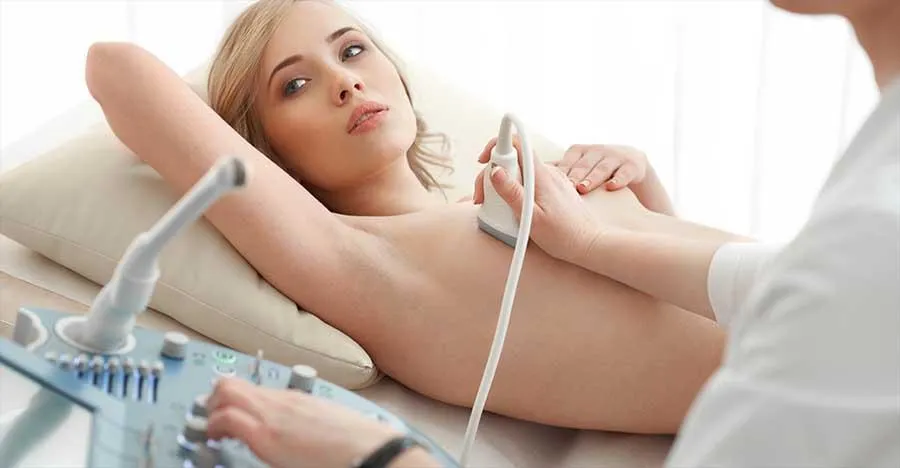- Home
- Scans for Women
- Scans for Men
- Msk
- Pregnancy
- Cardiovascular
- About
- Book a Scan
- Blog

Breast cancer is the second most common cancer women face, surpassed only by lung cancer, and it is the most feared cancer or disease for most women. Breast cancer occurs in about 12% of women who will live to the age of 90. Several well-established factors increase the risk of breast cancer, including family history, nulliparity (not having had children), early menarche (starting menstrual cycles early), advanced age, and a personal history of breast cancer. Other risks include exposure to environmental toxins such as tobacco smoke that increase the chance of cancer growth.
Early education on self-breast exams and early screening is crucial for achieving good outcomes. This comprehensive guide will discuss the importance of breast cancer screening, the various screening methods available, and the recommended guidelines for when to begin screening.
Self-exams and physician examinations can detect cancer at a rate of 70 to 80%. While these methods are not foolproof, they serve as an essential first step in identifying potential abnormalities. Women should be encouraged to perform self-examinations monthly, starting at the age of 20.
Adding screening mammography (mammograms) will increase detection to 96 - 98%. It has been shown that early detection through clinical exams and mammography can reduce breast carcinoma mortality by 20 to 30%. Today's gold standard for screening, mammograms still miss between 10 and 15% of neoplasms. If a clinically noted mass is followed by a negative mammogram, the workup should then include breast ultrasound and/or a fine needle aspiration cytology and close interval examinations.
The modality of Magnetic Resonance Imaging (MRI) is a method of examining the breasts that is far more sensitive in picking up smaller tumors than a mammogram. Although it is more expensive as a screening tool, the morbidity and mortality of missing a malignancy are even more significant.
Screening should start with a baseline mammogram at age 35, or younger if there is a strong family history. Annual examinations should be performed once a woman reaches 40 years of age. Disease prevention & early screenings are the mainstays of preventive medical practice, despite the somewhat conservative recommendations made by medical specialty societies and the managed care industry. The risk-benefit ratio for cancer screening often has the dollar as its bottom line. However, if you are the unfortunate patient to have cancer that was not detected early, then all the statistics in the world will not matter to you. Our philosophy is to invest a little more in time and money upfront to ensure a disease-free state.
An important thing for women to remember is that a positive family history alone increases the lifetime risk of cancer to about 25%, which is double the incidence of no such history. Recently, interest has focused on cancers associated with germline (inherited) genetic mutations. While approximately 5 - 10% of all breast cancer sufferers have a mutation in the BRCA1 gene (located on chromosome 17) and BRCA2 gene (located on chromosome 13), this type of screening should only be done when a first-degree relative with known cancer and a positive mutation is detected, or when a woman falls into a certain ethnic group. Women who have inherited a BRCA1 or BRCA2 mutation have a relatively high lifetime risk of breast cancer (about 50-85%). The risk for cancer in the opposite breast of a woman with a BRCA1 mutation is about 25%. In such cases, genetic
screening may be advocated. Once a tumor is detected, important prognostic determiners such as the stage of the disease, histology and nuclear grade, estrogen and progesterone receptor status, and HER2/neu gene amplification tests are advisable.
For more information on breast cancer, the following websites are helpful:
Screening is essential, but taking measures to help prevent cancer growth is equally important. There are daily habits that women might not be aware of that can increase their chances of developing breast cancer (and other cancers), such as poor lifestyle choices, lack of prevention, and inadequate early detection. Some preventive measures include:
Hormone replacement therapy can help manage menopause symptoms, but it's essential to choose a natural hormone replacement option to reduce breast cancer risk. Additionally, nutritional medicine plays a vital role in maintaining overall health and reducing cancer risk.
Engaging in regular physical activity can help lower the risk of breast cancer. Aim for at least 150 minutes of moderate-intensity aerobic activity or 75 minutes of vigorous aerobic activity each week, along with strength training at least two days a week.
Keeping a healthy weight is crucial in reducing the risk of breast cancer. Focus on consuming a balanced diet rich in fruits, vegetables, whole grains, and lean protein sources while limiting processed foods and added sugars.
Reducing alcohol consumption can help lower the risk of breast cancer. Aim to limit alcohol intake to no more than one drink per day for women.
Steer clear of smoking and exposure to secondhand smoke, as these can increase the risk of breast cancer and other health issues.
It is crucial for women to maintain annual physical exams and adhere to cancer screening regimens. Early detection and prevention are essential in the fight against breast cancer. By taking a proactive approach to breast cancer screening and implementing lifestyle modifications, women can significantly reduce their risk of developing this disease. Remember, early detection and prevention can save lives.